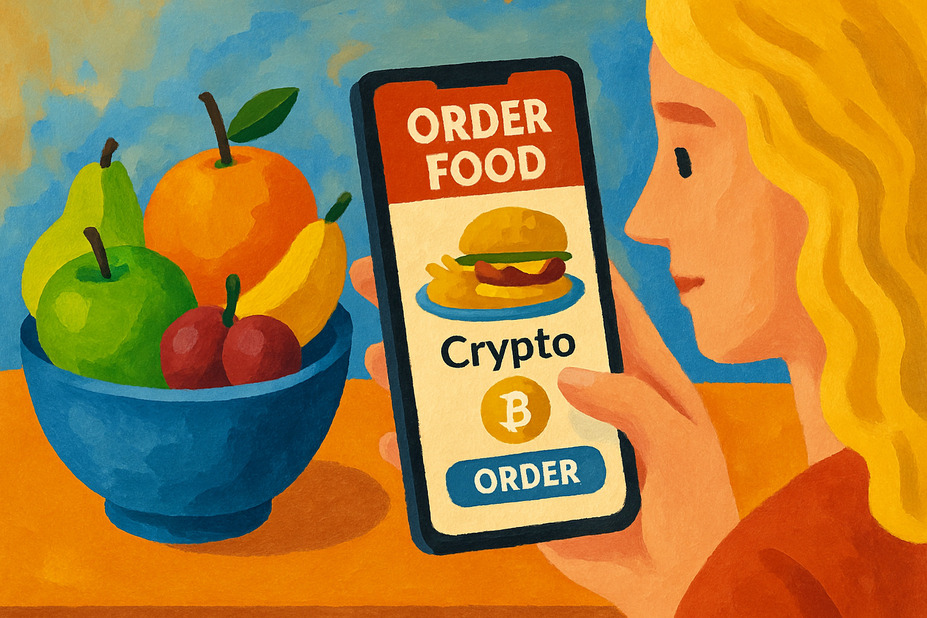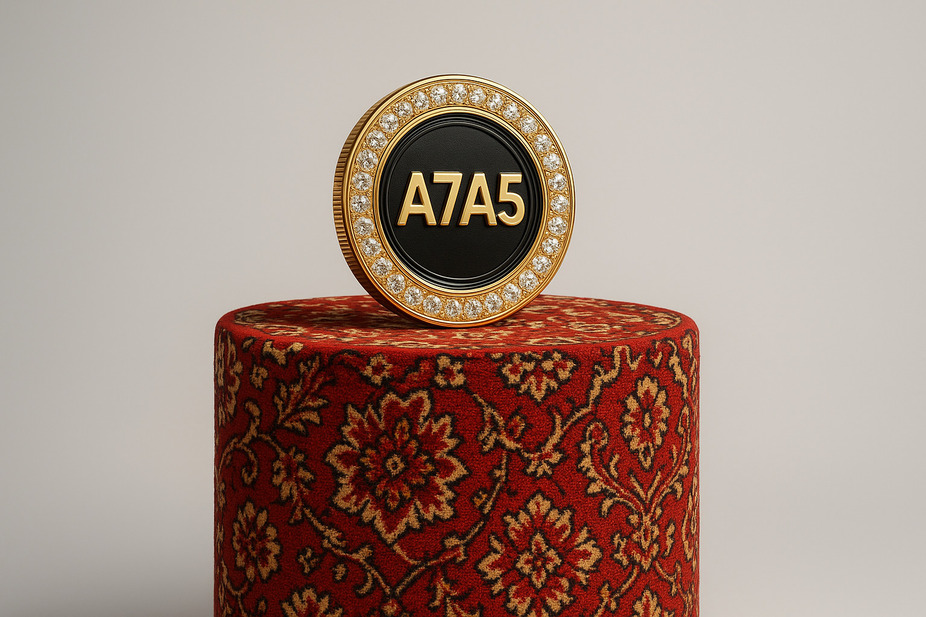Paying for grub with crypto: your guide to buying food with Bitcoin

As Bitcoin gains traction as a store of value, more people want to use it for everyday purchases, like grabbing a bite to eat.
In 2025, you can use Bitcoin to pay directly at 15,000 merchants and restaurants worldwide. Whether you’re using your own Bitcoin wallet or a crypto-backed card, there are plenty of ways to buy food with Bitcoin.
Bitcoin has come a long way since Laszlo Hanyecz’s historic pizza purchase. A whole new payment structure has emerged, with innovative ways to use Bitcoin for food.
Bitcoin payment processors like Bitrefill and BitPay are now globally recognized, handling thousands of transactions monthly. Retailers, restaurants, and food delivery services are increasingly embracing Bitcoin.
Even if merchants don’t directly accept Bitcoin, you can still use crypto cards or gift cards to make your purchase.
Bitcoin: beyond a store of value
Bitcoin is more than just a store of value. As the world decentralizes, Bitcoin is challenging traditional payment systems that rely on third-party approval. Bitcoin’s primary purpose is to bypass banks and enable direct, uncensored payments.
Satoshi Nakamoto created a peer-to-peer electronic cash system to empower individuals, so why not use cryptocurrency as intended?
This guide will show you how to pay for food with Bitcoin at grocery stores, restaurants, and online retailers, both in-store and online.
Fun Fact: The first Bitcoin transaction for food was Laszlo Hanyecz’s purchase of two pizzas for 10,000 BTC on May 22, 2010 – now celebrated as Bitcoin Pizza Day.
Can you really buy food with Bitcoin?
Yes, definitely! Options vary depending on your location. Using Bitcoin directly avoids intermediaries and higher costs, enabling pure Bitcoin transactions as Satoshi envisioned.
While most merchants don’t accept BTC directly, Bitcoin cards, gift cards, and food delivery portals that accept Bitcoin (even indirectly) are widely available. Just refill the card with cryptocurrency, and the payment processor converts Bitcoin to local currency.
Direct Bitcoin payments
Although the number of merchants accepting Bitcoin is growing, few fully embrace it as a payment method. When Bitcoin is accepted, a Lightning wallet is typically used for fast, low-fee payments.
Visit https://btcmap.org/ to find Bitcoin-friendly food companies worldwide. The URL provided helps users find places to spend Bitcoin.

Fast food companies like Burger King and Subway accept Bitcoin in certain locations. McDonald’s fully accepts BTC as a direct payment in El Salvador and as a pilot program in Lugano, Switzerland.
Restaurants like Mastro’s (selected US locations) and Tahini’s (a Canadian-Middle Eastern chain) also accept Bitcoin. Tahini even holds Bitcoin as a reserve asset.
Accepting Bitcoin directly for online orders is less common unless merchants partner with crypto-friendly delivery services. Companies like Manufy in the US accept Bitcoin directly for food delivery.
You can also buy groceries with crypto at Bitcoin-friendly stores. Whole Foods in the UK, US, and Canada accepts BTC via the Flexa network’s Spedn app at specific locations. Pick n Pay, a major South African grocery retailer, rolled out Bitcoin payments across many stores after a successful pilot.
El Salvador is known as a Bitcoin country, and most restaurants, grocery stores, and online retailers allow customers to pay with Bitcoin directly.
In municipalities like Lugano, Switzerland, and Mossel Bay, South Africa, many merchants (mostly small retailers) accept Bitcoin.
How to pay with Bitcoin directly:
- Download a custodial or non-custodial Lightning wallet on your mobile.
- Transfer Bitcoin to the wallet.
- Scan the merchant’s QR code.
- The purchase finalizes in seconds.
Fun Fact: Subway was the first major food chain to accept Bitcoin, with the first Bitcoin purchase occurring in Moscow, Russia, in 2013.
Bitcoin cards
Many services offer Bitcoin-funded debit cards that convert Bitcoin to fiat at the point of sale. BitPay, Wirex, and Binance are well-known companies that support Bitcoin and crypto payments at grocery stores like Walmart. They can also convert cryptocurrency into various currencies.
Bitcoin cards instantly convert crypto to fiat without the store needing to accept Bitcoin directly. Crypto card providers partner with companies like Visa and Mastercard to ensure widespread acceptance.
How to pay with Bitcoin cards:
- Sign up with a crypto card service.
- Link your Bitcoin wallet.
- Add funds.
- Swipe the card at checkout or connect it to Apple or Google Pay for mobile payments.
Bitcoin gift cards
Bitcoin gift cards are vouchers you can buy to purchase food from popular delivery platforms like Uber Eats, DoorDash, or Grubhub. Services like BitPay, CoinGate, and Bitrefill let you order food online with Bitcoin.
Bitcoin gift cards are also widely used for grocery shopping at Walmart, Whole Foods, Safeway, and Lidl, both in-store and online for pick-up or delivery.
How to pay with Bitcoin gift cards:
- Buy the card with Bitcoin at selected stores or platforms.
- Receive the digital gift card.
- Choose the merchant you want to pay with the gift card.
- Pay at checkout with the gift card.
Paying with Bitcoin gift cards is widely available, especially when the chosen restaurant or merchant doesn’t accept crypto directly yet.
Precautions when paying with Bitcoin for food
- Wallet security: Use a trusted and secure Bitcoin wallet, whether custodial or non-custodial, and keep your wallet’s private keys safe.
- Transaction fees: Be aware of transaction fees, especially when using the Lightning Network.
- Merchant reliability: Ensure the merchant is legitimate and accepts Bitcoin through trusted payment processors.
- Bitcoin volatility: Be prepared for potential price changes between payment and processing.
- Regulations and acceptance: Be aware of local cryptocurrency laws and whether merchants can legally accept Bitcoin.
Security is key. Taking precautions ensures your assets remain safe while enjoying the convenience of paying with Bitcoin.












